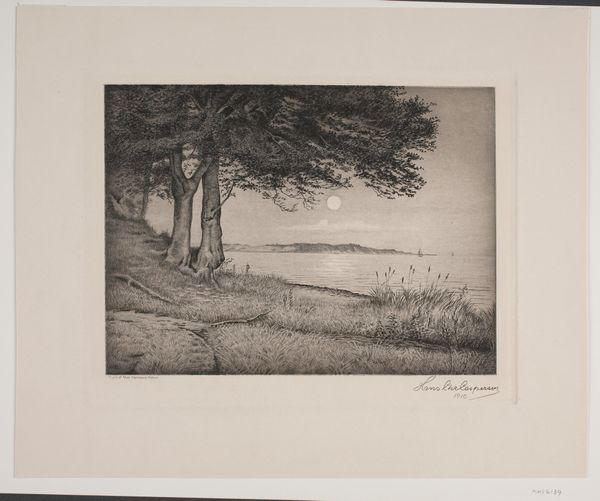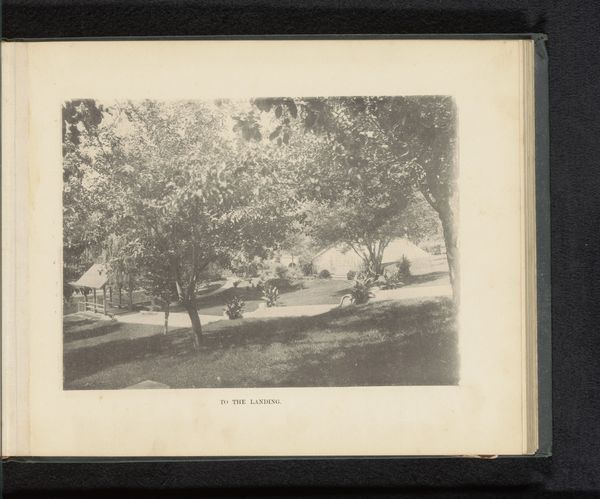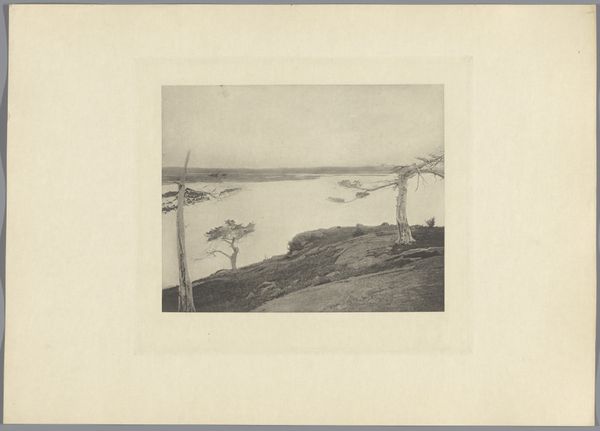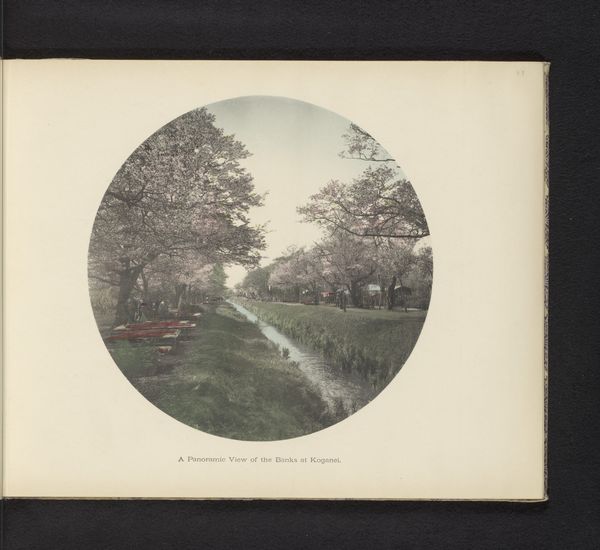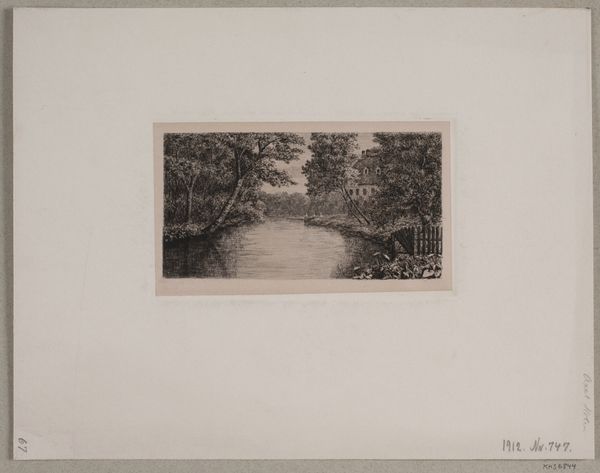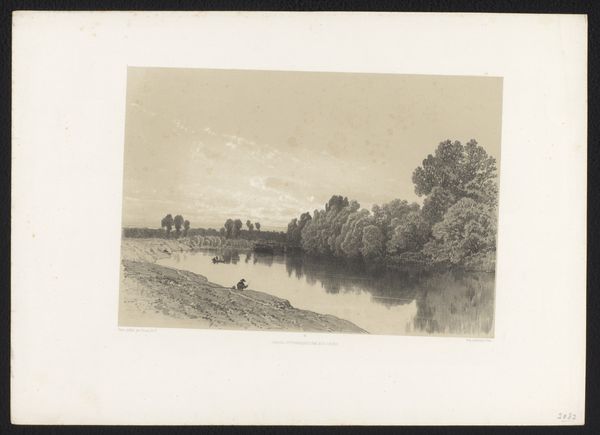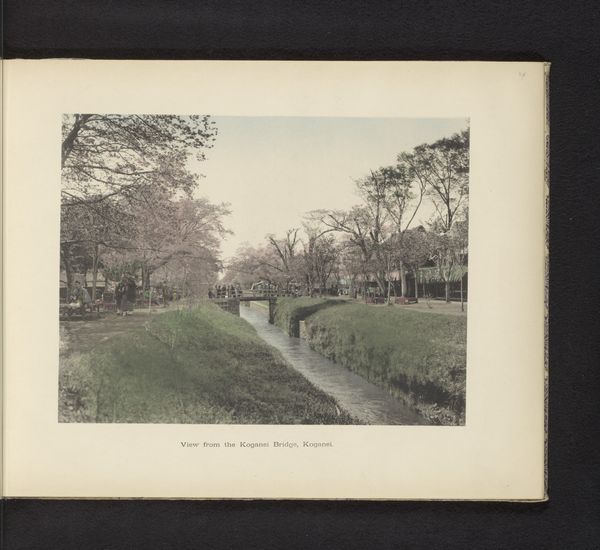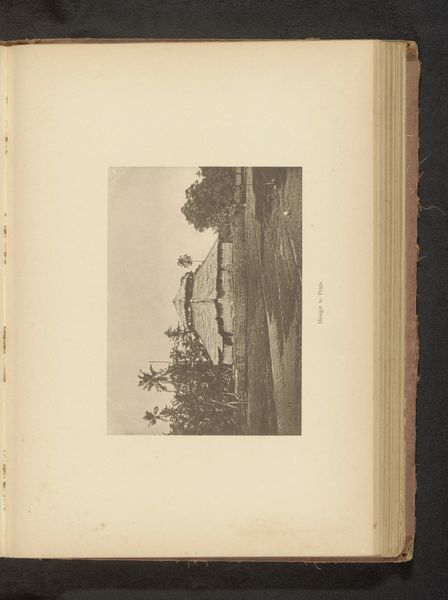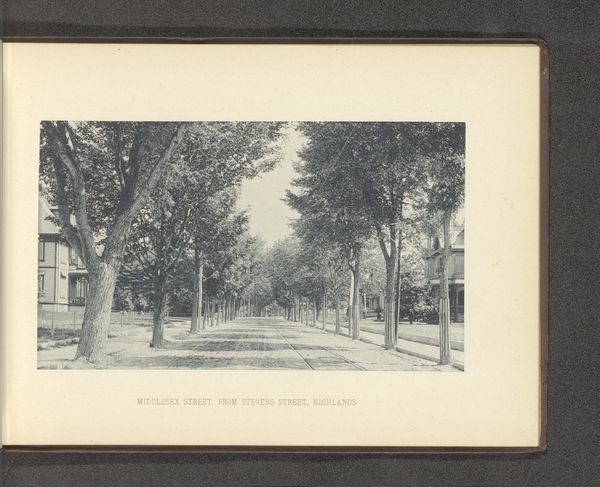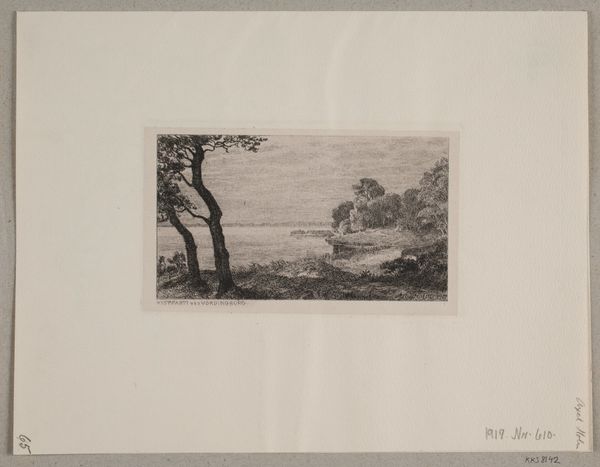
Gezicht op de oever van de Sumida rivier in Uenopark in Tokyo, Japan before 1897
0:00
0:00
photography, gelatin-silver-print
#
landscape
#
photography
#
gelatin-silver-print
Dimensions: height 211 mm, width 270 mm
Copyright: Rijks Museum: Open Domain
Editor: This gelatin silver print, taken before 1897 by Kazumasa Ogawa, depicts the Sumida River in Tokyo. It feels almost dreamlike, with the soft focus and delicate cherry blossoms. What do you see in this piece beyond the surface beauty? Curator: I see a complex negotiation of cultural identities and power dynamics. Ogawa, a pioneer of photography in Japan, was working at a time of intense Western influence. The landscape, while seemingly serene, is imbued with the tension between tradition and modernity, and is made with the technology imported from the West. Notice how the composition borrows from Western landscape painting, yet the subject matter is distinctly Japanese, and the photographic technology of the print from Europe. What tensions are present in this image, in your opinion? Editor: Well, I notice the figures in the background. They're blurred and almost anonymous. It makes me wonder about their individual stories within this rapidly changing society. It's beautiful but almost voyeuristic in the artist's choice to exclude detail. Curator: Exactly! This ambiguity invites us to consider their place within the broader narrative of modernization. Consider also the concept of *Japonisme*; that is to say the European artists' appropriation of Japanese art. In a sense, it speaks of a larger geopolitical shift. This photo is not merely a snapshot, but a document reflecting complex global interactions and a negotiation of identities, don’t you think? Editor: That’s a fascinating point! I never considered how much of the global context of the moment was imbued in it, beyond simply its function as a photograph of a pretty landscape! Curator: Precisely. And that is the great challenge for those studying visual culture. To see the forest beyond the trees. Editor: Definitely something to think about. Thanks for pointing out that lens! Curator: My pleasure. This kind of inquiry helps us understand how art serves as a critical lens through which we understand power.
Comments
No comments
Be the first to comment and join the conversation on the ultimate creative platform.
